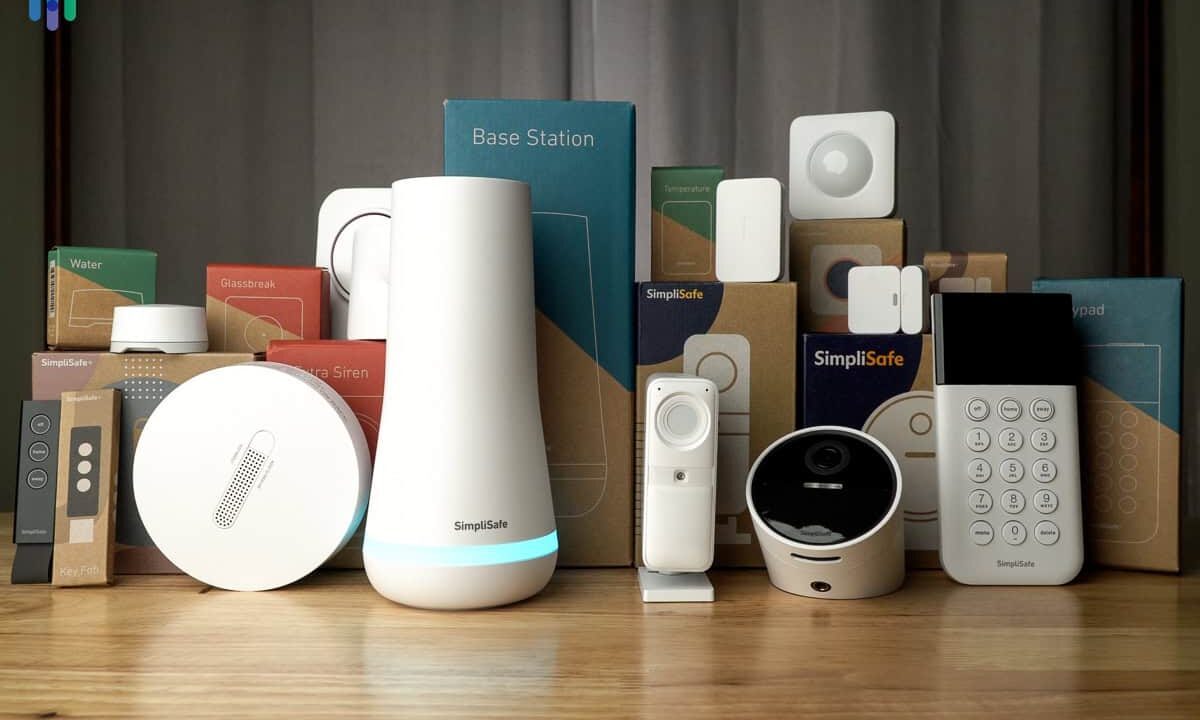Streaming services have transformed how we consume television, offering endless hours of binge-worthy content at our fingertips. But as viewers dive into new seasons of their favorite shows, many face a common frustration: remembering what happened in previous seasons. A poorly crafted or nonexistent recap can leave fans confused, disengaged, or even abandoning a series altogether. This article explores why TV streaming platforms need to prioritize high-quality recaps, how they can improve them, and the impact better recaps can have on viewer satisfaction and retention. Drawing from personal experiences and industry insights, we’ll break down actionable solutions to make recaps more engaging, accessible, and effective.
The Problem with Current TV Show Recaps
Most streaming platforms offer some form of recap, but they often fall short. From rushed 30-second montages to text-heavy summaries buried in menus, these recaps fail to jog viewers’ memories effectively. As a binge-watcher who recently revisited Stranger Things before its latest season, I found myself squinting at a chaotic clip reel that left me more confused than enlightened. Why should fans have to scour fan wikis or Reddit threads to piece together plot points?
Why Recaps Matter to Viewers
Recaps are the bridge between seasons, helping viewers reconnect with a show’s narrative. They’re especially critical for complex series with sprawling casts or intricate plots, like Game of Thrones or The Witcher. A good recap saves time, reduces frustration, and rekindles excitement, ensuring fans dive into new episodes with confidence.
Common Shortcomings of Streaming Recaps
Current recaps often lack depth, context, or accessibility. Some are overly vague, while others assume viewers have photographic memories. For instance, I once tried watching a recap for Westworld that was just a montage of dramatic scenes with no narration—great for aesthetics, but useless for clarity.
What Makes a Great Season Recap?
A great recap is concise, engaging, and tailored to the viewer’s needs. It should refresh key plot points, highlight character arcs, and set the stage for the new season without spoiling surprises. Think of it as a friendly guide, like a friend catching you up over coffee. Here’s what streaming services can do to elevate their recaps.
Clear and Concise Storytelling
A recap should tell a story, not just list events. By focusing on the main plot and character motivations, platforms can create a narrative flow that feels natural. For example, a recap for The Mandalorian could focus on Baby Yoda’s journey and Mando’s growth as a protector, rather than throwing in every side quest.
Use of Visual and Audio Cues
Visuals paired with narration or text overlays can make recaps more memorable. Netflix’s recap for The Crown uses voiceovers to summarize royal drama, which feels like a mini-history lesson. This approach helps viewers process information through multiple senses, making it stick.
Accessibility for All Audiences
Recaps should cater to diverse viewers, including those with disabilities. Subtitles, audio descriptions, and clear visuals are non-negotiable. I once watched a recap with a friend who relies on subtitles, only to find the text was too small and fast to read—an avoidable oversight.
Tailored Length and Depth
Not every show needs the same recap length. A lighthearted sitcom like Brooklyn Nine-Nine might need a quick 1-minute summary, while a dense drama like Succession warrants a 3–5-minute deep dive. Platforms should match the recap’s depth to the show’s complexity.
How Streaming Platforms Can Improve Recaps
Streaming services can take concrete steps to deliver recaps that resonate with viewers. By leveraging technology, creative storytelling, and user feedback, platforms can turn recaps into a competitive advantage. Here are actionable strategies.
Leverage Interactive Recaps
Interactive recaps let viewers choose what to focus on, like character arcs or major plot twists. Imagine a recap for The Umbrella Academy where you can click to explore each sibling’s journey. This approach keeps viewers engaged and caters to different attention spans.
Incorporate Fan Feedback
Streaming platforms can use viewer data to refine recaps. By analyzing watch patterns or social media discussions, services like Hulu or Disney+ can identify which plot points fans struggle to recall. For instance, after noticing fans tweeting about confusion over Loki’s multiverse, Disney+ could prioritize timeline explanations in recaps.
Offer Multiple Recap Formats
Not every viewer wants a video recap. Some prefer text summaries or infographics for quick skimming. Platforms like Amazon Prime could offer a menu of options: a 2-minute video, a bulleted text summary, or a visual timeline. This flexibility respects how different people process information.
Integrate Recaps into the Viewing Experience
Recaps should be easy to find, not buried in menus. Netflix’s auto-playing recaps before new seasons are a step in the right direction, but they could go further. For example, embedding a “Recap Previous Season” button on the episode selection screen would make access seamless.
Benefits of Better Recaps for Streaming Services
Investing in high-quality recaps isn’t just about viewer satisfaction—it’s a smart business move. Here’s how better recaps can drive engagement, retention, and revenue for streaming platforms.
Increased Viewer Retention
A clear recap reduces the friction of jumping back into a show, keeping viewers hooked. Studies show that 60% of viewers abandon shows due to confusion or lack of context. A well-crafted recap can lower this churn rate, keeping subscribers active.
Enhanced User Experience
Recaps that are engaging and accessible make viewers feel valued. When I watched Ozark’s Season 3 recap, I appreciated how it highlighted Marty’s schemes without overwhelming me with details. That small effort made me more likely to stick with the platform.
Competitive Differentiation
In a crowded streaming market, small details like great recaps can set platforms apart. Disney+ could stand out by offering recaps narrated by beloved characters, like Grogu “speaking” for The Mandalorian. It’s a memorable touch that builds brand loyalty.
SEO and Discoverability Boost
Optimized recaps can also improve a platform’s search engine visibility. By creating recap pages with keywords like “Stranger Things Season 3 recap” or “The Witcher Season 2 summary,” platforms can attract organic traffic from fans searching for refreshers.
Comparison: Current Recap Practices Across Platforms
To understand where improvements are needed, let’s compare how major streaming services handle recaps.
| Platform | Recap Style | Strengths | Weaknesses |
|---|---|---|---|
| Netflix | Auto-playing video recaps | Seamless integration, engaging visuals | Often too brief, lacks depth for complex shows |
| Hulu | Text summaries and short videos | Accessible text options | Inconsistent quality, hard to find |
| Disney+ | Narrated video recaps | High production value, character-driven | Limited interactivity, not always detailed |
| Amazon Prime | Mixed video and text recaps | Variety of formats | Navigation to recaps can be clunky |
| HBO Max | Detailed video recaps | In-depth for complex shows | Overly long for casual viewers |
Pros and Cons of Current Recap Approaches
Pros:
- Most platforms offer some form of recap, showing awareness of viewer needs.
- Video recaps are visually engaging and align with the streaming experience.
- Some services, like HBO Max, cater to fans of intricate narratives.
Cons:
- Recaps are often too short or vague, missing key context.
- Accessibility features like subtitles or audio descriptions are inconsistent.
- Lack of interactivity limits viewer engagement.
People Also Ask (PAA) Section
Here are answers to common questions about TV show recaps, sourced from Google’s PAA feature.
Why don’t streaming services provide better recaps?
Many platforms prioritize new content over recaps, viewing them as secondary features. Budget constraints and a lack of viewer feedback also limit innovation. However, as competition grows, services are starting to recognize recaps as a retention tool.
Where can I find recaps for my favorite shows?
Check your streaming platform’s episode selection page for built-in recaps. If unavailable, fan sites like Vulture or official show wikis often provide detailed summaries. YouTube also hosts fan-made recaps for popular series.
What are the best tools for creating recaps?
For platforms creating recaps, tools like Adobe Premiere Pro for video editing, Canva for infographics, and Google Analytics for viewer insights are invaluable. These tools help craft engaging, data-driven recaps.
How long should a season recap be?
The ideal length depends on the show’s complexity. Simple comedies need 1–2 minutes, while dense dramas may require 3–5 minutes. Interactive recaps can offer flexibility for different viewer preferences.
FAQ Section
Q: Why do I need a recap if I’ve already watched the show?
A: Recaps refresh your memory on key events, especially for shows with long gaps between seasons. They save you from rewatching entire seasons and help you dive into new episodes with clarity.
Q: Can recaps spoil new seasons?
A: Well-designed recaps avoid spoilers by focusing only on past seasons. Platforms should clearly label recaps to ensure viewers aren’t exposed to new plot points accidentally.
Q: Are text recaps as effective as video recaps?
A: It depends on the viewer. Video recaps are more engaging for visual learners, while text recaps suit those who prefer skimming or have accessibility needs. Offering both is ideal.
Q: How can fans encourage better recaps?
A: Share feedback on social media or platform surveys. Tagging services like Netflix or Hulu with specific requests, like “better recaps for The Witcher,” can push them to prioritize improvements.
Q: Do recaps help with SEO for streaming platforms?
A: Yes! Recap pages optimized with keywords like “show name + season recap” can drive organic traffic from search engines, attracting viewers looking for plot refreshers.
How Viewers Can Advocate for Better Recaps
Fans aren’t powerless—your voice matters. Here’s how you can push for better recaps:
- Use Social Media: Tweet or post about specific shows needing better recaps, tagging the platform. For example, “Hey @Netflix, a detailed recap for You Season 4 would be a game-changer!”
- Submit Feedback: Most platforms have feedback forms. Share specific pain points, like “The recap for Euphoria was too vague about Rue’s arc.”
- Support Fan Content: Engage with fan-made recaps on YouTube or blogs, which often fill gaps left by platforms. This signals demand for better official recaps.
Conclusion: A Call to Action for Streamers
Streaming platforms have a golden opportunity to enhance viewer experiences with better recaps. By prioritizing clear storytelling, accessibility, and interactivity, services like Netflix, Hulu, and Disney+ can keep fans engaged and loyal. As a viewer, I’ve felt the frustration of piecing together plotlines from lackluster recaps, and I know I’m not alone. It’s time for streamers to listen to their audiences and deliver recaps that spark excitement rather than confusion. Let’s make every season feel like a seamless continuation of the story we love.
For more insights on improving your streaming experience, check out Vulture’s TV recaps or explore fan discussions on Reddit’s TV communities. Together, we can push for a better binge-watching future.





